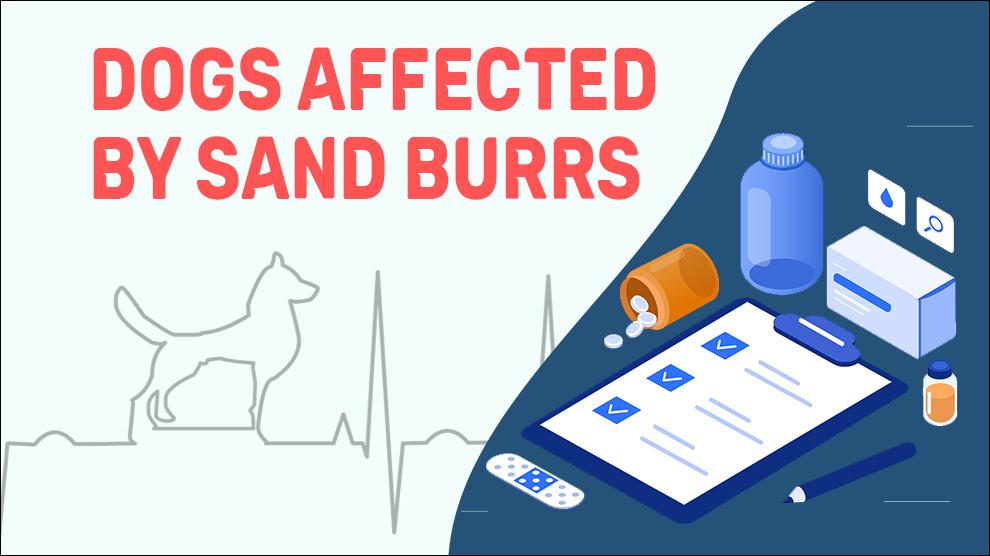What is Sand Burrs In Dogs?
Who doesn’t love to take the dog for walks, right? But did you know of an unseen threat that you should look out for?
No, not critters and parasites this time….it’s Prickly sand Burrs. They are a real pain in the fur. These little buggers which are part of certain weeds and grass are horrible especially if you have dogs with long, lush fur.
Simply un-burr-able
Think of micro cactuses! Sand burrs, as their name implies, are summer annuals that thrive in the hot, sandy soil. The sharp, spiny burs act like velcro, letting them latch on to passing pets. Some types can even drift in the air even with a gentle breeze.
Whether you call them sand burrs or sand spurs, they must be removed, or else, these “pricklies” will burrow into the skin and may lead to an infection.
Beaches are another common spot to stumble upon the thorny and painful burs. Imagine all the soft crevices in our dog’s feet and how those hooks/spines of burs can embed, and press their way up into the pads. Not only is that hurting, but if not removed, can cause irritation and possible infection.
Symptoms Of Sand Burrs In Dogs
Signs your pup is lodged with Sand burs.
Paw:
- Limping
- Swelling or discharge between the toes
- Constant licking between the toes
Abdomen and back:
- Scratching
- Redness or swelling
Treatment Options For Sand Burrs In Dogs
There is no such separate treatment for prickly little pain dispensers as such.
Removing burrs from dog fur can be time-consuming but it is not too difficult.
Vets remove the burs that are ingested internally under an anesthetic and surgical procedure.
Home Remedies For Sand Burrs In Dogs
The prickly burrs love to stick to the pets’ hair. The longer a burr is left unattended, the worse it will get. It’s often sensible to pull out as many burs without any delay. We can't stress that enough!
Shorthaired coat dogs: Loose burrs can be removed by hand one at a time with your fingers or by a pair of tweezers
For dogs with long or thick coats:
Step 1: Use protective gloves, and then add a few drops of olive oil or coconut oil or hair conditioner, or detangling spray or cream on the affected fur.
Step 2: Using your fingers and separate the tangles
Step 3: Use a wide-tooth comb or hairbrush such as SAFARI Dog De-Matting Comb.
Step 4: Once the fur is relatively detangled, use a metal or hard-wire comb to get the burrs out
Avoid brushing huge swaths of fur; always brush lesser chunks of hair to reduce discomfort for your dog
Use a rotating tooth comb to remove burrs that you can’t get out by hand
Use a superior rotating tooth comb (wide-spaced) for tough tangles
Step 5: For hard-to-remove burrs, you may have to resort to cutting out by using scissors or using pliers to crush the burr. Use a de-matting tool to remove the crushed burrs.
Step 6: You can use tines of a fork to gently pull as many hairs as possible away from the burr
Step 7: Repeat this process using gentle motions until your dog is free of all burrs.
Step 8: Give your pup fur a slicker brush scan, and you’re done!
Prevention Of Sand Burrs In Dogs
- Prevention is the best tactic! Get rid of sand burrs you find in your yard, prevent exposure and avoid sand burr-infested areas like hot, sandy soils and patchy lawns.
- When going for a walk with dogs, avoid bushy areas and stick to beaten-down paths
- If you must walk in areas where there are sand burrs, don’t let your dogs run through high grass, and keep your dog on-leash
- Lush haired dogs should be comb-checked or trim the hair between the belly, toes, and ears
- Check your dog’s coat regularly during the summer and spring season or after any potential exposure
Affected Dog Breeds Of Sand Burrs
There is no breed predisposition. All the dogs that roam outdoors.
Additional Facts For Sand Burrs In Dogs
- Sandbur (Cenchrus) is a grassy annual weed that is also commonly known as Sandspurs, bur grass, buffelgrass, goat heads, grass stickers, sticker burs, crabgrass, etc
- This notorious invasive weed actually looks like silent grass earlier in the year, mature into a spreading carpet of flat blades with hairy liguled noxious plants we all know and hate.
- While Sandburs are adaptable enough to grow in almost every type of soil, they thrive most in well-drained, sandy soils, which is why they get their name.
- There are about 20 to 25 species of grasses of sandbur but perhaps the most common of them all are Common sandbur or grass bur, long spine sandbur, southern sandbur, and field sandbur.
When To See A Vet For Sand Burrs In Dogs?
Easily accessible Sand burr incursions in your dogs can be removed by yourself.
On the other hand, for deeply embedded burrs or if ingested internally or the area around it is swollen or red, call your veterinarian right away.
Food Suggestions For Sand Burrs In Dogs
- Tasty and attractive foods to cheer your dog to eat
- White rice and chicken
- Shreded chicken breasts
- Sweet potato, pumpkin
- Bone broth --beef or pork bones
Conclusion
Trust us. When we say, you wouldn't want you or your pets to risk a run-in with burrs in the lawn because you'll certainly land in a state of bother. Burrs are aggravating buggers for your dog to say the least, and they often take lots of careful, time-consuming work to remove.

















